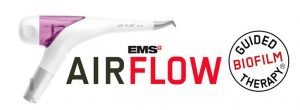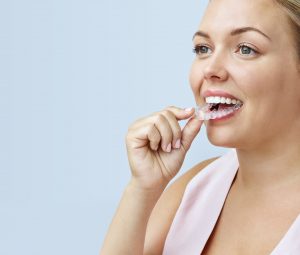Your dentist has told you that you now have to see the hygienist for periodontal treatment.
What on earth does that mean and what does it involve?
Don’t dentists “clean” teeth?
Why would I need to see a hygienist?
Our dental hygienists work as part of the dental team in treating patients. They use preventive, educational and therapeutic methods for the control of oral diseases like tooth decay and gum disease. Although our hygienists work closely with dentists, the two roles are quite different; typically, hygienists focus on preventive measures like cleaning your teeth and gums or administering fluoride treatments, while dentists tend to take the lead on interpreting x-rays, diagnosing issues, and providing more advanced procedures like root canal therapy.

In this article, we’ll discuss the different parts of your hygiene appointment and what you can expect. Your first hygiene appointment is usually about one hour long, although this can vary based on your individual needs – this may seem like a long time but a lot is covered in this appointment.
1. Discussion
We will first sit with you and discuss your dental history, any problems you are experiencing (e.g. bleeding, tenderness, sensitivity, biting pain, foul taste, bad breath), your medical history (e.g. medications, medical conditions, allergies, etc), and any worries or concerns you may have. This helps us make sure you’re getting care that’s tailored to your circumstances and needs.
2. Assessment
This is where we have a thorough look at your mouth, starting with:
- Soft tissue exam:
This will involve inspecting your lips, cheeks, gums (where bleeding and pus may be identified by gentle probing) and tongue. If we find something of interest or any potential issues, we may take a photo of it and show you in the mirror in order to keep you informed about what’s going on. - Saliva:
We’ll take note of the saliva in your mouth, including its consistency and texture. This is because your saliva helps wash away debris and keep your mouth healthy, so it’s important for us to look at how much saliva your mouth produces. - Periodontal charting:
This part can take 10-30 minutes to complete, depending on the condition of your gums. Periodontal charting measures where your gum attaches to the tooth, recession (also called “gum wear”), and whether your teeth appear to be loose or shifting position. We use a small probe with measurements on it. You will hear lots of numbers being called out and put into the computer. For some people, probing can feel like a dull pinch on the gum, but we can apply a special numbing gel to help manage any discomfort.
3. Discussion
After the assessment is complete, we’ll explain our findings and what this means for your oral and general health. We often use diagrams and models to explain your oral health to you. For some people, they are able to have the assessment and treatment (professional cleaning) completed in a single appointment. However, if you have any issues that need more attention, you may need to return for another appointment with your dentist and/or a specialist such as an oral surgeon or periodontist (a clinician who specialises in treating advanced gum disease).
4. Local Anaesthetic (numbing)
If the charting/probing was uncomfortable or if you have some deep areas that we need to treat we will recommend having a local anaesthetic. This may be needed for some or all of the areas of your mouth and can make the treatment more comfortable for you.
5. Debridement/treatment
This is the stage of your appointment in which we treat your gums and teeth. Firstly, it will involve using an ultrasonic (Cavitron) scaler. This is a powered device which has a high-pitched noise. Microscopic vibration and water are used to remove initial deposit (calculus/tartar, plaque, stain) from your teeth.
Use of the ultrasonic scaler is followed by hand scalers to manually remove any leftover deposit and smooth the tooth and root surface. This stage can feel like a scratching sensation, but don’t worry it will not damage your tooth.
Once we are happy that your teeth have had all the deposit removed from them, we will use a probe and dental floss to check the in between areas of your teeth to ensure they are all lovely and smooth.
At the end we will polish your teeth to leave them feeling fresh and sparkling. This is always a nice way to finish the appointment.
6. Homecare: keeping your mouth healthy between appointments
Based on your needs and circumstances, we’ll recommend some things for you to do at home to help keep your mouth stay healthy between appointments. We may make recommendations for improving your brushing or flossing techniques to help you get the best results from your at-home hygiene routine.
7. Next time…
To determine the right time frame in which you should return to have your mouth reassessed and treated, we’ll consider all our findings and your oral health needs. Some people may only need to be seen once each year, while others may need to come every 3-4 months.
After your appointment
After your appointment, some people experience discomfort/tenderness, while others enjoy the feeling of a freshly-cleaned mouth. Don’t be worried if your teeth feel different after your treatment, they often do as all the calculus/tartar has been removed. If you do experience some tenderness, it may just last the afternoon and for others it may last a day or two after your appointment – this is normal. Your gums may need some TLC, so it’s a good idea to do warm salty water rinses and take your usual pain relief as recommended by your dentist and/or doctor.
If you have any worries or concerns before or after your appointment, please always feel free to give us a call – our Wellington based team we are more than happy to have a chat with you.




